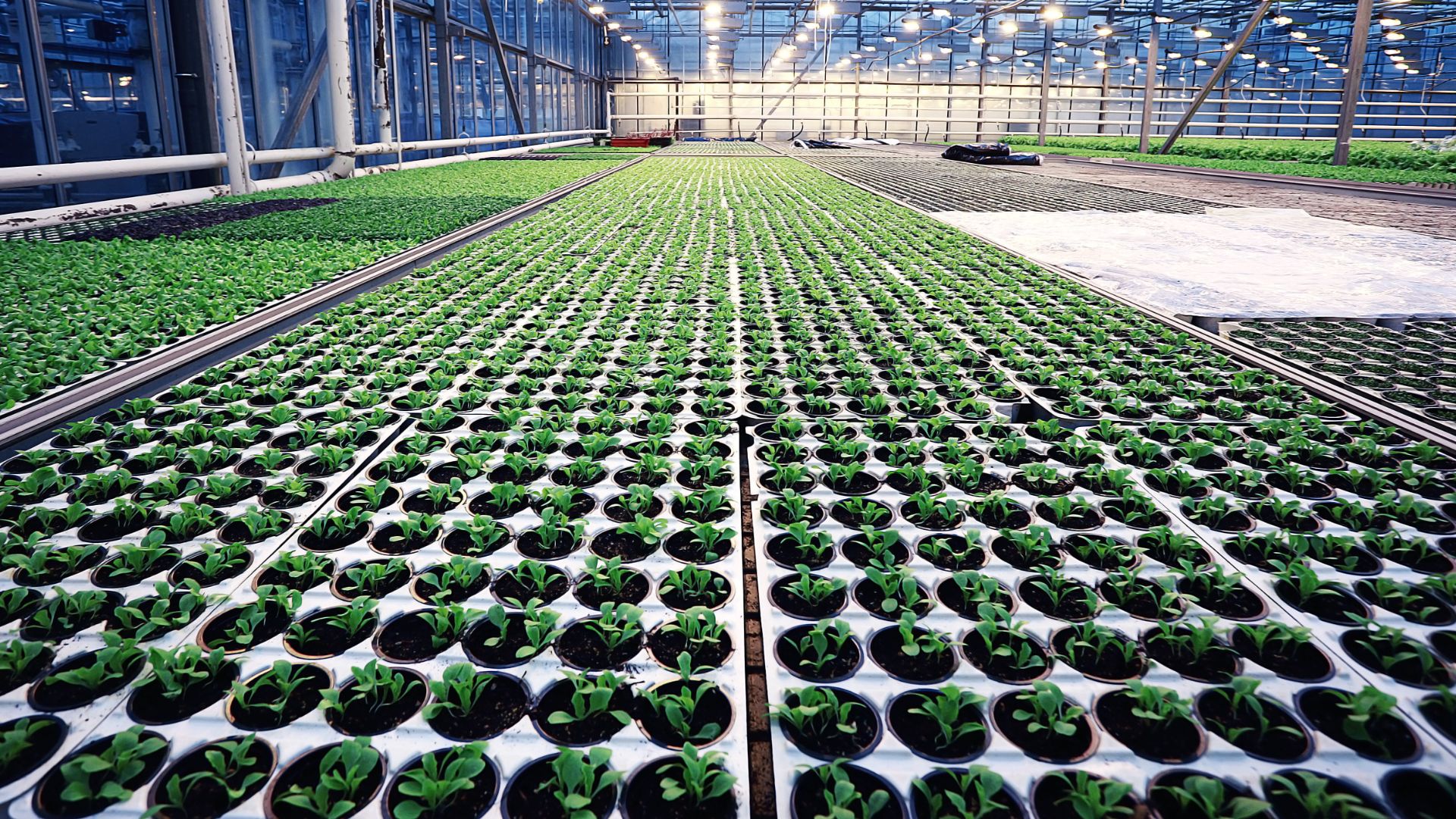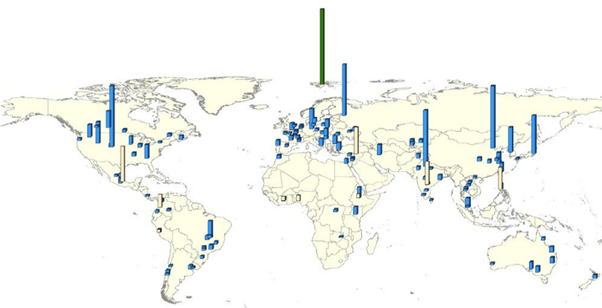What is Plant Propagation – Types and characteristics of Sexual and Asexual propagation material

This post is also available in:
This post is also available in:
![]() Deutsch (German)
Deutsch (German) ![]() Ελληνικά (Greek)
Ελληνικά (Greek)
What is Plant Propagation?
As plant propagation, we define the process of multiplying or regenerating a plant (mother plant).
A farmer could use plant propagation to obtain a desirable marketable product (like the seeds, fruits, or tubers of a plant-crop), increase the number of plants or regenerate old, non-productive plants, gather planting material for the next growing season, combine 2 varieties or species together (e.g., in trees), or/and obtain superior varieties.
Depending on the plant species, this process can occur in one of two ways (in some species, both ways can be used):
- sexual and
- asexual
Sexual Propagation of a plant – species
A plant is propagated sexually when it produces seeds. This process involves the reproductive organs of the plant (flowers), the successful transport (pollination) of the male gametes (pollen grains from the flower’s anthers) to the female flower part (stigma), and the fertilization of the female egg cell. If all factors are ideal, a fruit/seed will be produced. This seed can give rise to another plant that will carry a combination of traits and genes of the parental plants.
The majority of crop species cultivated today and responsible for the food security of the global population are reproduced sexually. Sexual reproduction has major advantages since:
- It is cheaper
- It needs less technical knowledge and equipment
- Each plant can produce dozens or even millions of seeds
- It is the only way to produce new varieties and hybrids that have superior characteristics (from their parents)
- It is a way to avoid the transmission of major plant diseases from one generation to the next
- The seeds can be stored for longer periods of time, and they are not so demanding regarding the storage conditions as the propagation material of the other category (asexual reproduction).
- The logistics are easier and cheaper due to the smaller size and weight of the seeds.
What is Asexual or Vegetative Propagation – What types of asexual propagation exist?
The asexual or vegetative propagation is mainly the cloning of a plant by using the vegetative parts (shoots, stems, roots, leaves) of a mother- plant. The regeneration of the plant part used creates a new plant, identical to the mother (donor) plant.
There are many different methods of asexual reproduction in the plant kingdom, but mainly 5 of them are mostly used in agriculture:
- Cuttings
- Division
- Budding
- Grafting
- Layering.
Keep in mind that while more than one vegetative propagation method may be possible to use per plant species, there might be a variation in the regenerative efficiency.
Asexual propagation has many advantages. Some of them are the following:
- It is the best (and sometimes the only) way to preserve and maintain a plant species (preserve the exact genetic combination of genes – variety purity).
- It may be easier and faster in some species than the sexual reproduction
- The lack of the juvenile stages leads to more vigorous plants with accelerated growth (especially during the initial stages) that mature in a shorter period of time.
The role of the propagation material in preventing plant/species extinction
While genetic purity and high uniformity within a crop are one of the major requirements of the farmers and the consumers, it comes with a great cost. This genetic monoculture (of hybrids coming from sexual reproduction or vegetatively reproduced plants) has been the reason for biodiversity loss within the crop species since only a few varieties are cultivated globally nowadays. This leads to the loss of many vital traits and genes. At the same time, this monoculture in vast areas increases the risk of massive crop and yield losses in case of a disease or pest outbreak. Some historical examples of such massive destruction in agriculture due to monoculture are the coffee-rust disease outbreak in Sri Lanka 150 years ago, the potato late blight in Ireland during 1845-1849, the southern corn leaf blight epidemy of 1970–1971 in the USA, and the Fusarium wilt tropical race 4 that nowadays puts the total production of bananas in Asia at risk. Finally, climate change’s effects (high temperatures, drought, frost, etc.) pose another major risk for many plant species that are close to extinction.
To protect and preserve the global genetic biodiversity of plants, scientists and farmers take action. Depending on the plant species and the level of the risk for extinction, the scientists decide on the type of propagation material that needs to be collected and how it should be preserved.
Preservation at the farm level or in the natural habitat (in situ): This strategy is insufficient for saving endangered species.
Preservation of plant species outside their natural environment (ex situs):
- In Botanical gardens. Here the species are preserved as leaving plants.
- In Seed Conservations and Genebanks: There are approximately 1750 genebanks around the world that preserve millions of plant species to protect biodiversity. In such storage facilities, the plant propagation material is preserved for long periods of time in very specific conditions of light, temperature, and humidity. In seed banks and seed conservations, the dried seeds are usually stored at temperatures between 1.6-10 oC (35-50 oF). In cases where a species can only be propagated with vegetative parts (asexual propagation), the preservation process becomes much more challenging (in vitro banks). The main reason is that plant parts like shoots and tubers, for example, are much more sensitive and, even in optimum storage conditions, can survive for a limited time. To overcome this obstacle, scientists have to freeze cuttings of plants, shoot tips/meristerms, and pollen (cryopreservation at -196 oC) or/and constantly regenerate these plants in vitro (with tissue culture) or field gene banks. In all these facilities, it is essential to apply all necessary phytosanitary measures and maintain the variety, purity, and viability of the stored propagation material. The picture below shows the richness of the plant species stored in the different gene banks globally and their locations.

Source: (FAO, 2010)
Further reading
What is Asexual or Vegetative Plant Propagation?
Sexual Propagation of a Plant – Everything around seeds
References
https://extension.umaine.edu/gardening/manual/propagation/plant-propagation/
https://extension.missouri.edu/publications/mg3
https://apsjournals.apsnet.org/doi/10.1094/PHYTO-07-20-0311-RVW
https://www.mdpi.com/2079-9276/2/2/73
https://www.fao.org/3/i3704e/i3704e.pdf
https://mastergardener.extension.wisc.edu/files/2019/02/PlantPropagationMG.pdf
Dulloo, M. E., Hunter, D., & Borelli, T. (2010). Ex situ and in situ conservation of agricultural biodiversity: major advances and research needs. Notulae Botanicae Horti Agrobotanici Cluj-Napoca, 38(2), 123-135.









































































